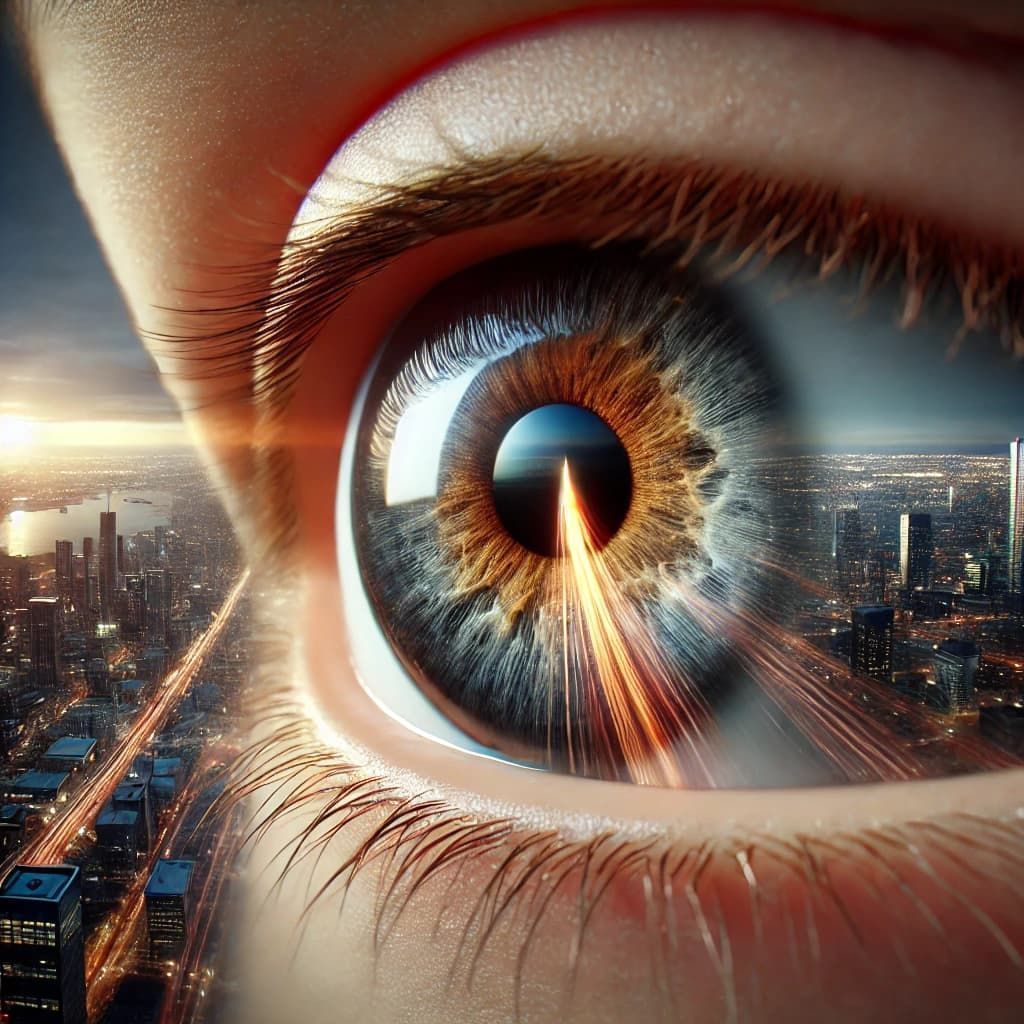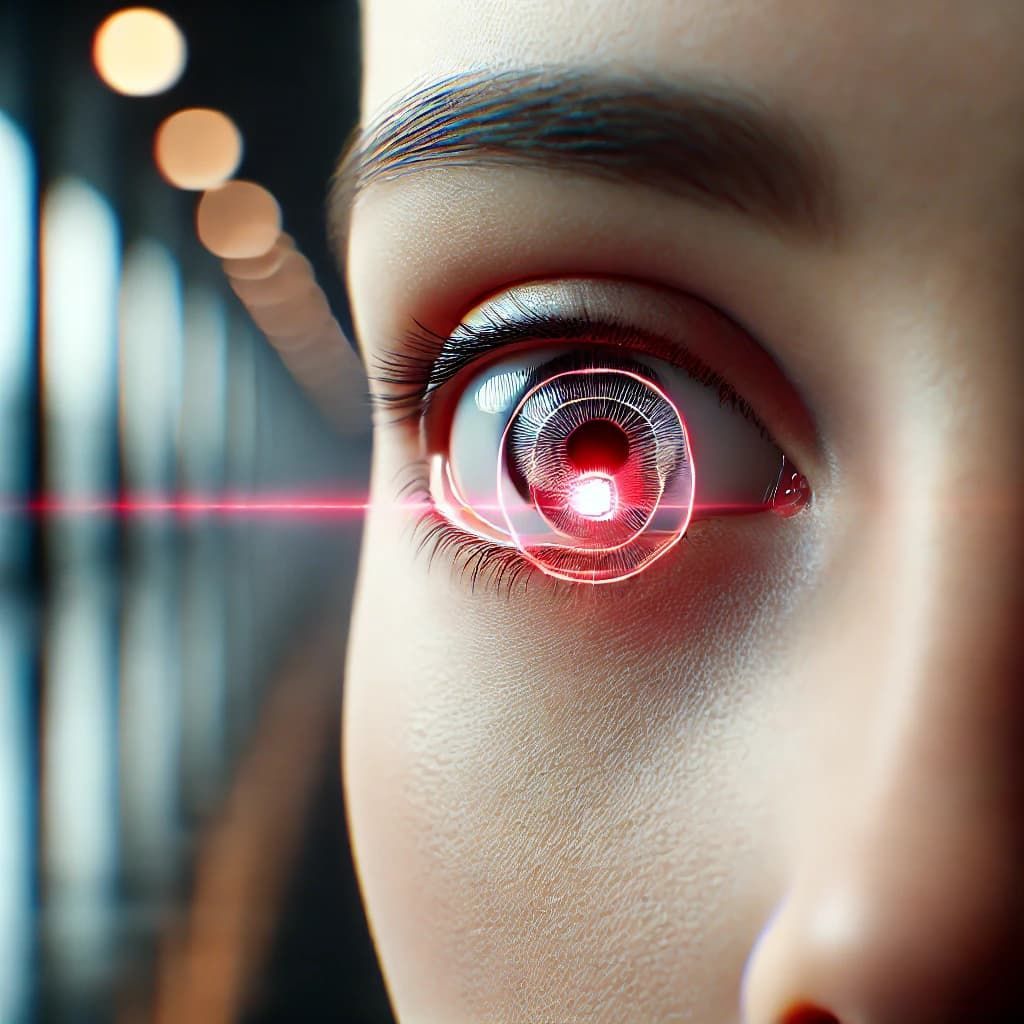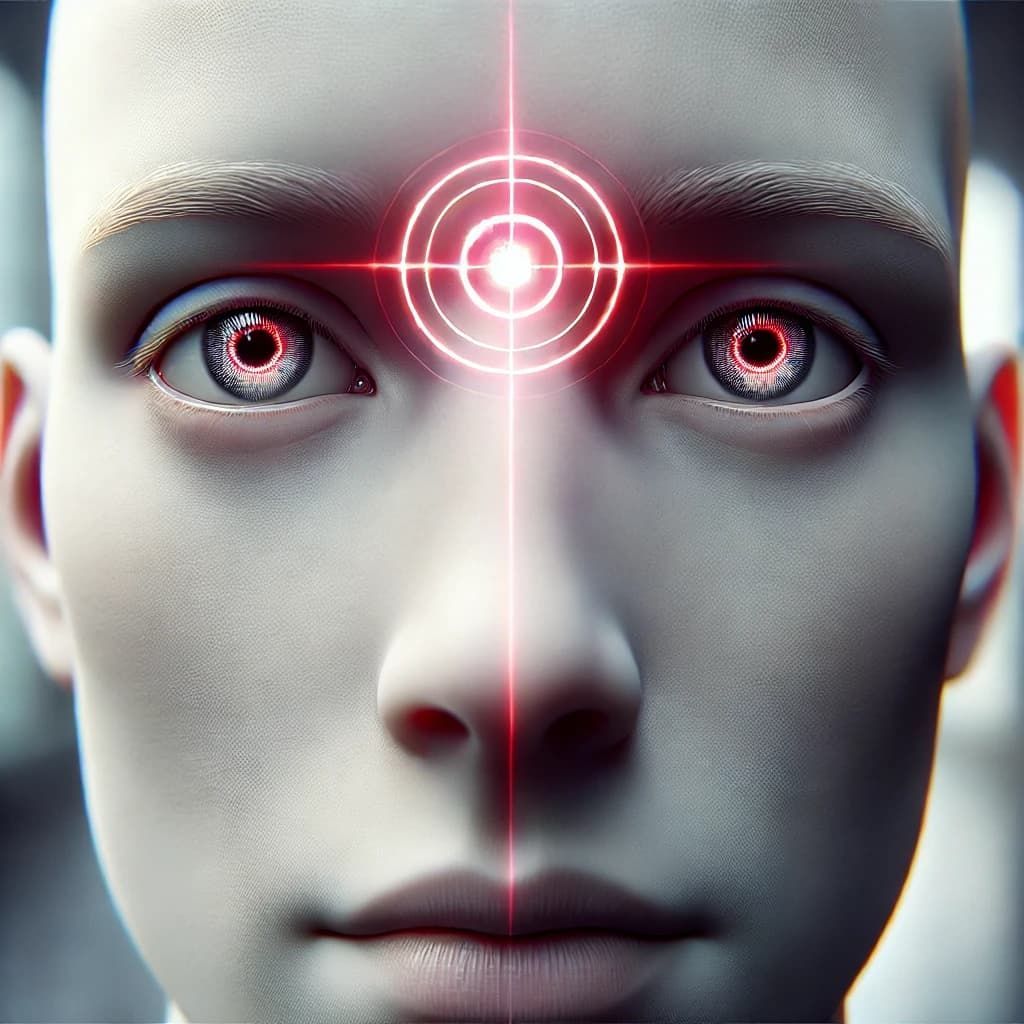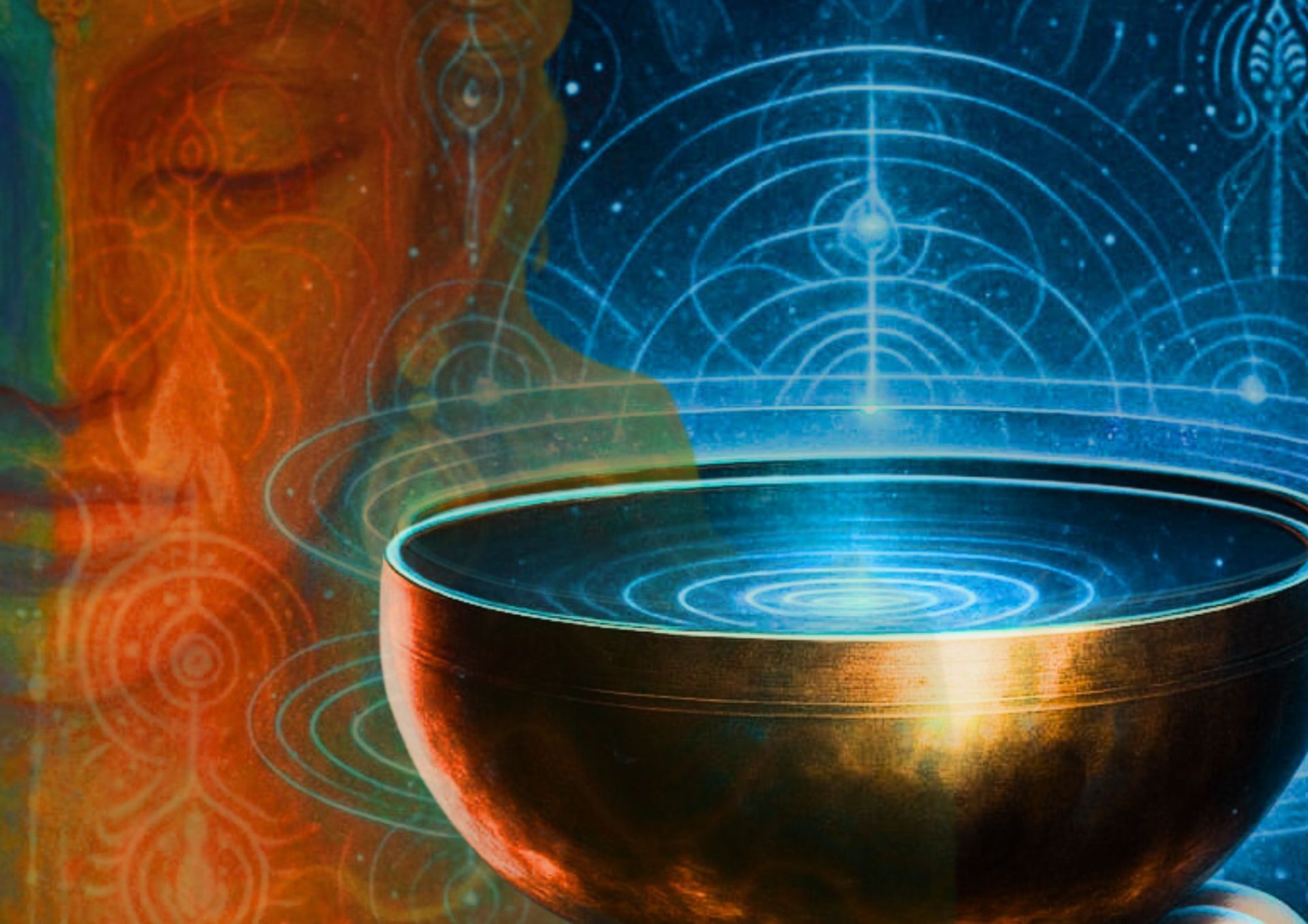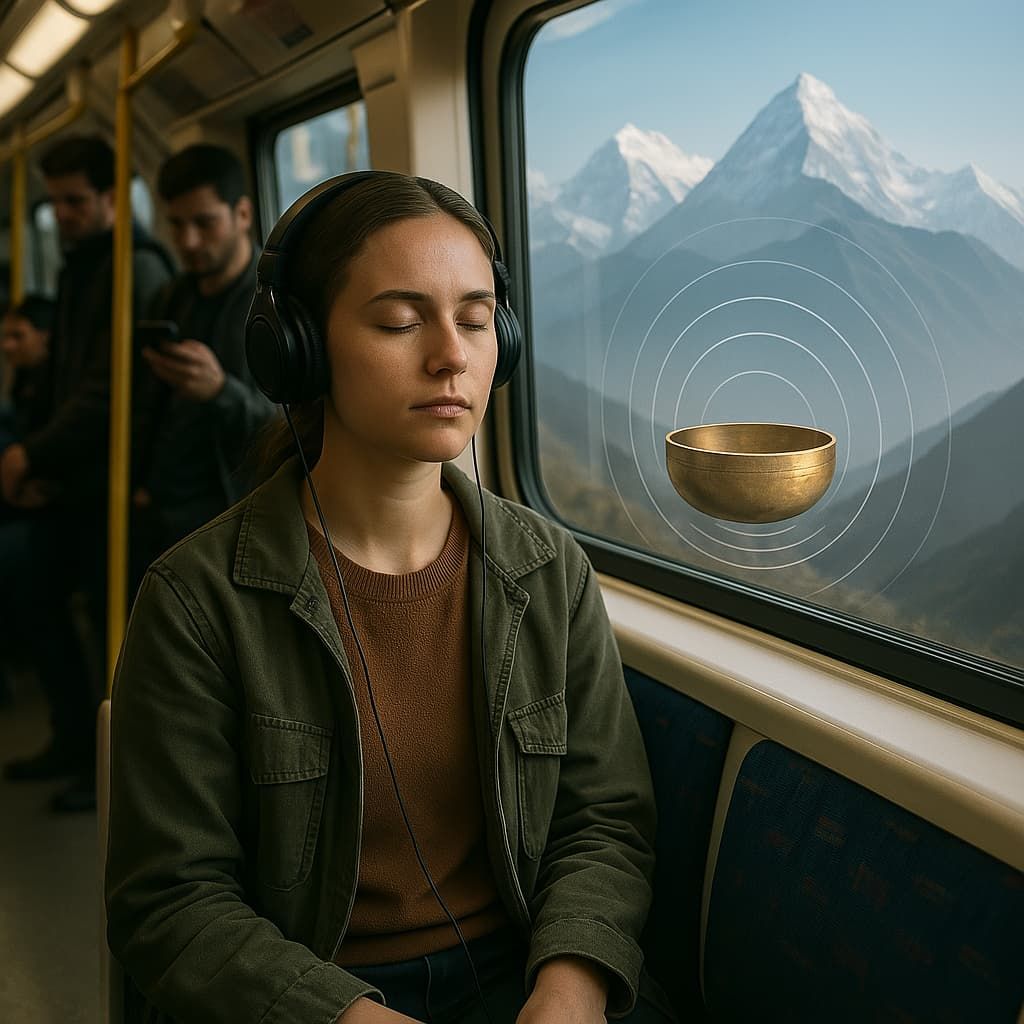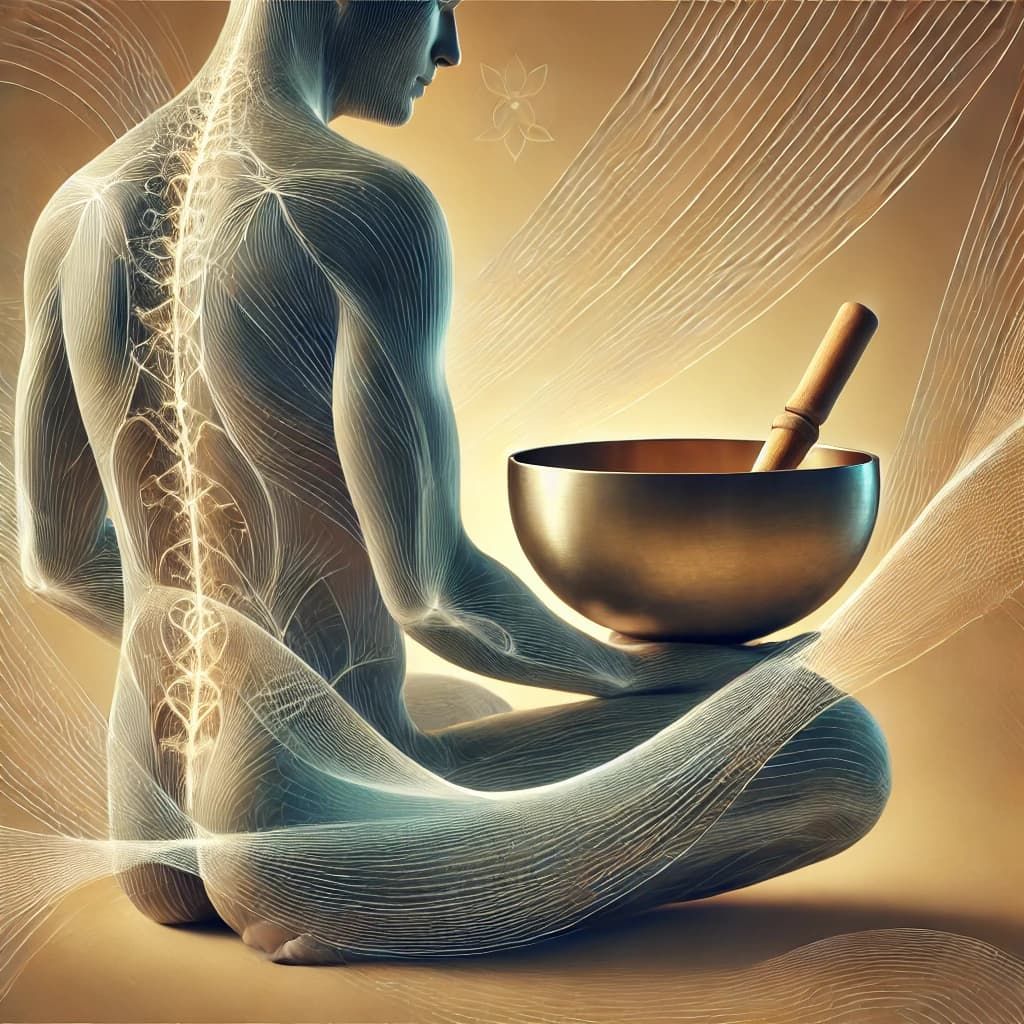Towards a Visual Adjustment through Sound Vibrations
The human eyes are constantly adjusting & synchronizing with each other to maintain a coherent visual field. In recent years, the growing prevalence of visual issues among children and adults, exacerbated by prolonged screen exposure, has raised questions about how modern lifestyles impact our ocular health and balance. Increasing numbers of people are reporting eye strain, blurred vision, and even changes in visual acuity, all linked to prolonged exposure to artificial light and screen time.
In parallel, ancient practices such as sound healing with singing bowls suggest that vibration might play a role in harmonizing both physical and mental states. This has led us to question whether sound vibrations can also influence the fine-tuning of the eyes, fostering a state of relaxation and balance.
The core idea here is to explore the relationship between eye frequency and sound vibration. We propose that the eyes, although independent organs, operate with frequency-like adjustments, subtle oscillations that are always slightly asynchronous, much like beating frequencies in acoustics.
These differences create micro-adjustments that maintain coherence and harmony within our perception. Stress and tension seem to disrupt this natural adjustment, highlighting the crucial role of relaxation in maintaining cognitive
balance.
Vision Re-education: What We Know and What We Don't Know
Each eye is controlled by 6 extra-ocular muscles, allowing precise and rapid movements essential for binocular vision, creating a unified image from slightly different perspectives. The coordination of these muscles is an ongoing process of micro-adjustments, maintaining balance even under constant changes in focus and direction.
Holistic Alignment and Mathematical Symmetry
Eyes are not merely optical sensors but integral components of body alignment. They play a key role in harmonizing the visual field with the body's orientation, functioning as a mathematical symmetry system.
The concept of holistic alignment through the eyes links the brain’s hemispheres, as the right eye connects to the left hemisphere and vice versa. This crossed neural pathway is fundamental in creating a balanced perception. When this alignment is disrupted, by stress, fatigue, or other factors the visual field can appear unstable or incoherent, increasing the eyes' efforts even more.
Frequency of Adjustment: Beyond Blinking
While blinking, which occurs 15 to 20 times per minute, serves as a natural recalibration, it is not the only mechanism at play. Emerging hypotheses suggest that each eye operates at a subtle frequency, akin to beating frequencies found in acoustics. These frequencies are slightly asynchronous yet harmonize to create a coherent visual field.
The concept of eye frequency proposes that the eyes, even when working in tandem, are slightly out of phase, creating a continuous oscillation that adjusts in real time. When stress increases, the natural frequency adjustment between the eyes becomes less accessible, causing visual tension and discomfort.
Eye Movement Therapy and Practices
Techniques such as Eye Movement Desensitization and Reprocessing (EMDR) leverage rhythmic eye movements to process emotional trauma. This therapy not only suggests a connection between ocular movement and mental balance but also demonstrates highly promising results in practice. It is widely used and scientifically supported, indicating that eye movement therapy is far from being a trivial or unfounded technique.
Similarly, eye yoga offers practical exercises to enhance flexibility and coordination of the eye muscles. It is particularly beneficial for people with physical limitations, as it does not require strenuous effort but rather focuses on gentle and controlled movements. Eye yoga can help restore balance and relieve strain, making it an accessible and effective practice for all.
Binocular Vision and Cerebral Synchronization: A Rhythmic Perspective
In neurodivergent individuals, the fusion process of vision is usually less fluid, resulting in visual fluctuations. Using the rhythmic vibrations from singing bowls might stabilize these adjustments by resonating with the brain’s own oscillatory patterns, creating a grounding effect.
The brain’s left and right hemispheres maintain an alternating rhythm that influences sensory integration, including visual perception. Singing bowls, through prolonged and stable frequencies, can reinforce hemispheric coherence, helping to regulate oscillatory balance.
Nature of Singing Bowl Vibrations
Singing bowls emit long, continuous vibrations that are both stable and evolving, allowing the brain to resonate with the frequency. These vibrations can travel through the cranial bones and the fascia, subtly stimulating ocular muscles and brain regions involved in visual perception.
Unlike abrupt or fragmented sounds, the sustained frequency of bowls offers the brain time to process and settle. This resonant stability fosters a sense of inner coherence, helping to stabilize brainwaves and visual focus.
Just as light waves produce visual clarity, sound waves influence ocular coherence. The vibration of singing bowls creates a sonic space that allows perceptual realignment, harmonizing mental, physical, and sensory balance.
The Phenomenon of Phosphenes: The Eye's Natural Visualization Power
One intriguing aspect of the human visual system is the phenomenon known as phosphenes. This effect occurs when the eye spontaneously projects the complementary color of an image it has recently perceived, even after the eyes are closed or the original stimulus is removed.
Phosphenes are often experienced as spots or patterns of light and color that appear in the dark or with closed eyes, especially after looking at bright objects. It demonstrates the eye’s capacity to recreate previously seen forms and colors autonomously, acting as a kind of internal visual memory projection.
In tantric visualization practices, this phenomenon takes on a profound dimension. It is linked to the concept of the “third eye”, a symbol of heightened mental visualization and perceptual power. Traditionally developed through yogic practices and sound meditation, the ability to generate vivid mental images without direct sensory input has been cultivated for centuries. The third eye phenomenon can be understood as a form of enhanced internal projection, where the brain’s visualization capacity is honed to the point of generating complex images through focused concentration and internal resonance. Practicing sound healing with singing bowls can stimulate this latent ability by creating a stable vibrational field, which synchronizes the brainwaves and enhances the perception of phosphenes.
Through integrated visualization exercises that combine sound and visual concentration, practitioners may notice the appearance or strengthening of phosphenes. This effect serves as a natural gateway to developing internal vision, suggesting that the brain is not merely a passive receiver but an active creator of visual experiences.
Future Perspectives
Further research into the relationship between sound-induced states & vision could open new avenues for enhancing cognitive abilities in general. Understanding how sound waves & brain oscillations interact with the visual cortex might reveal deeper insights into the inner vision capabilities of the human mind.
Thank you for taking the time to read, xx.

